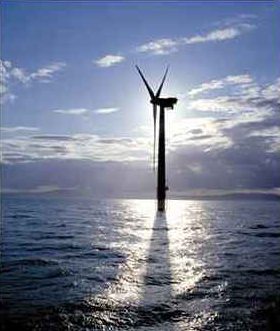The future of the Cape Wind project is now threatened by a "backdoor"
legislative attempt from Alaska Congressman Don Young, according to Cape
Wind Associates, the group of project developers behind the proposed 420
MW Cape Wind project off the coast of Massachusetts.
Rep. Young's effort would also delay progress on the development of any
other offshore wind proposals, causing the American renewable energy
industry to fall further behind its foreign competitors.
Last week, Rep. Young distributed a five-page letter to colleagues in
Congress urging support for an amendment he says he plans to offer in
Conference Committee. "He's only been talking to NIMBY opponents and his
letter reflects that, it is one-sided and inaccurate," said Cape Wind
spokesman Mark Rodgers.
"Making important energy policy that affects national security, the
economy and public health is too important to be done behind the closed
doors of a conference committee that avoids public hearings or the
scrutiny of the full committees of each chamber," said Rodgers. "This is
coming at a time when members of both parties are talking about their
commitment to reform Congress to make their work more transparent and to
curtail the influence of lobbyists."
Cape Wind Associates have tracked this new piece of legislation; what is
purely their perspective on the matter follows:
The "Young amendment" was first reported in an article in the
Congressional Quarterly on December 5, in which Young's office denied its
existence and called Cape Wind "paranoid." In subsequent media reports,
Young's office mostly refused public comment or said little about what he
was trying to do. "Up until now, Congressman Young has apparently been
trying to conceal his efforts," said Rodgers.
Congressman Young is seeking to attach the amendment to the Coast Guard
Reauthorization Bill in Conference Committee. The stated purpose of a
Conference Committee is to "resolve differences" between House and Senate
Bills, not to introduce new provisions that were not reviewed by either
chamber, as is happening in this case. If the Amendment gets attached in
Conference Committee, it is difficult to remove as both chambers tend to
vote on important spending bills "up or down" with no changes.
At the heart of Young's letter and Amendment is a call to ban offshore
wind farms within 1.5 nautical miles [1.15 statute miles = 1 nautical
mile] of a shipping channel or ferry route. For comparison, the required
buffer zone between offshore oil and gas rigs and shipping lanes is 500
feet. The entire justification offered for Young's 1.5-mile ban is a
recent report in the United Kingdom that identifies an approach on how
possible marine navigation radar risks of offshore wind farms should be
reviewed. Crucially, the UK approach calls for a buffer zone of 500
meters, about one-third nautical mile. The UK approach rejects a "one size
fits all" solution and leaves it up to the UK Coast Guard to evaluate each
project beyond 500 meters on a case-by-case basis.
By contrast, Young's Amendment would strip authority away from the US
Coast Guard to review any offshore wind project, like Cape Wind, closer
than 1.5 nautical miles to a shipping channel or ferry route by banning
them outright. Young inaccurately claims his amendment is based on the UK
approach but he has more than quadrupled the size of the UK buffer zone.
Not surprisingly, Young's Amendment is opposed by the Coast Guard.
Young's Amendment also brushes aside the experience in Denmark where an
offshore wind farm near Copenhagen sits .25 nautical mile from an
extremely busy shipping lane, and another offshore wind farm in the Baltic
Sea is 1 nautical mile from the main channel that connects the Baltic Sea
with the North Sea. These and other Danish offshore wind farms have had no
reports of any problems with sea navigation.
Don Young is the House Chair of the Coast Guard Conference Committee, key
Senate Members that can defeat this amendment include: Stevens (R-AK),
Snowe (R-ME), Cantwell (D-WA), and Inouye (D-HI).

